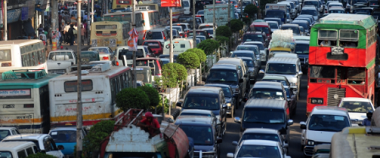
from the International Monetary Fund
— this post authored by Tao Zhang
Government debt in some of the world’s poorest countries is rising to risky levels, a new IMF report shows. The report looks at economic developments and prospects among the world’s low-income countries, which account for a fifth of the world’s population but only four percent of global output.

The report focuses not only on the rise in government debt, but also on the shift in the composition of creditors. And, because of this shift, it also focuses on the importance of official creditors working together to find ways to ensure efficient coordination in the event of future debt restructurings.
The drivers of the debt build-up vary across countries. They include shocks – the sharp drop in commodity prices of 2014, which hit budget revenues in commodity exporters, natural disasters, including the Ebola epidemic, civil conflict – as well as high levels of public spending that were not linked to financing productive public investment. Ample global liquidity played an important role in allowing for the rise of debt in low-income countries, by making it easier to borrow. Our study calls for action on the part of borrowers, lenders, and the international community.
Government debt is rising
Budget deficits have been rising in most low-income countries during this decade: 70 percent of low-income countries had higher government deficits in 2017 than during 2010-14. For commodity exporters, falling revenues contributed to higher deficits, whereas higher spending was the more important factor in other countries. For the median country, public debt levels increased to 47 percent of GDP last year, up from 33 percent of GDP in 2013.
The current build-up of public debt comes in the wake of the low debt levels and robust growth that followed the international community’s actions to write off most of the debt of highly indebted poor countries – the Heavily Indebted Poor Countries (HIPC) initiative and Multilateral Debt Relief Initiative , which left countries with more resources to spend on investment and education.
















